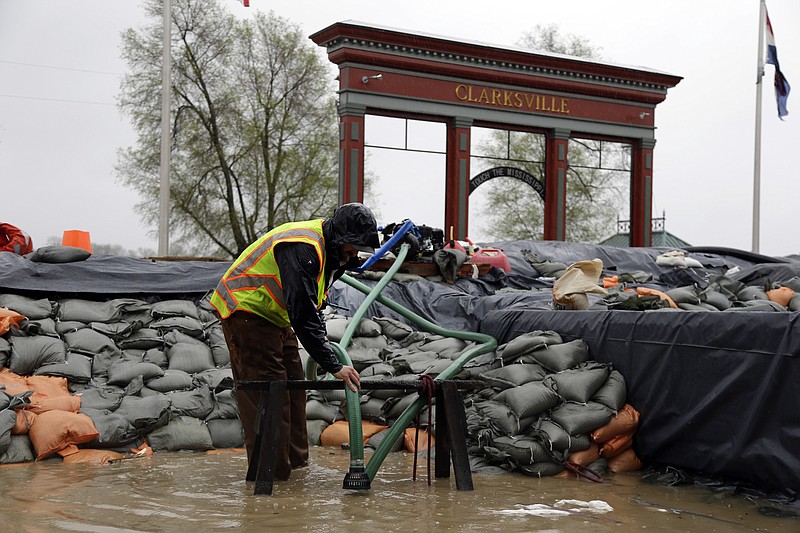PEORIA HEIGHTS, Ill. (AP) - More rain on Tuesday was the last thing flood fighters across the Midwest wanted to see, adding more water to swollen rivers that are now expected to remain high into next month.
Floodwaters were rising to record levels along the Illinois River in central Illinois. In Missouri, six small levees north of St. Louis were overtopped by the surging Mississippi River, though mostly farmland was affected.
The Mississippi and Illinois rivers have crested in some places, but that doesn't mean the danger is over. The National Weather Service predicts a very slow descent, thanks in part to the additional rain expected to amount to an inch or so across several Midwestern states.
"The longer the crest, definitely, the more strain there is on the levee," said Mike Petersen, a spokesman for the U.S. Army Corps of Engineers in St. Louis.
The biggest problem areas were in Illinois, on the Illinois River. In Peoria Heights, roads and buildings were flooded and riverfront structures were inundated. Firefighters feared that if fuel from businesses and vehicles starts to leak, it could spark a fire in areas that could be reached only by boat.
"That's our nightmare: A building burns and we can't get to it," said Peoria Heights Fire Chief Greg Walters. "These are combustible buildings and we have no access to them simply because of the flooding."
About 20 to 30 homes and businesses near the river have been evacuated, he said.
Among those still in their homes was Mark Reatherford, a 52-year-old unemployed baker. He's lived in the same house for two decades, a split-level home with a gorgeous view: a small park between him and the Illinois River.
By Tuesday afternoon, the river had rolled over the park and made it to Reatherford's home, creating a 3-foot-deep mess in the basement. Reatherford had cleared out the basement furniture and was hopeful the main floor would stay dry.
Now, he's considering moving.
"You can't get a better view than what we've got here," Reatherford said. "The sun comes up over the river, moon comes up ... and now you've got this. I'm getting too old to deal with this."
In nearby Chillicothe, more than 400 homes have been affected by the flood, said Vicky Turner, director of the Peoria County Emergency Management Agency. Many homes have been evacuated, but others whose owners have had their buildings raised over the years because of flooding have chosen to stay put, Turner said.
"They row back and forth ... up to the main road," she said.
Meanwhile, shipping resumed Tuesday along a 15-mile stretch of the Mississippi near St. Louis after the U.S. Coast Guard determined that 11 barges that sank last weekend were not a hazard to navigation.
Investigators were trying to determine what caused 114 barges to break loose in St. Louis County. Coast Guard Lt. Colin Fogarty said drifting debris that can collect under docked barges may have weighed on the fleet and the lines that secured them to shore.
The Mississippi River crest was still a couple of days away in Dutchtown, Mo., a town of about 100 residents 110 miles south of St. Louis. Town clerk and emergency management director Doyle Parmer said about three dozen members of the Missouri National Guard were helping residents sandbag. He was confident the few homes and businesses would remain dry.
In St. Louis, crews scrambled to stem the flow of millions of gallons of raw sewage that has been pouring into the river since two of three pumps failed at a treatment plant two days earlier.
The plant processes some 110 million gallons of sewage a day; about half of that was being discharged into the river untreated. Many communities downriver draw their drinking water from the Mississippi.

